
Humphreys Peak within the Coconino National Forest near Flagstaff is home to a variety of wildlife.
©
Arizona’s tallest mountain is Humphreys Peak, which is located in the San Francisco Peaks near Flagstaff and has an elevation of 12,633 feet (3,851 meters). It can be found in the Kachina Peaks Wilderness Area within the Coconino National Forest. The peak is named after Major General Andrew A. Humphreys, who was a Union Army officer during the Civil War and played an important role in the development of the American West.
Humphreys Peak is popular among hikers and outdoor enthusiasts because of its challenging and rewarding hiking trails. The most popular trail is the Humphreys Summit Trail, which is a strenuous 4.4-mile (7.1 km) hike that takes around 6-8 hours round-trip. The trail is steep, rocky, and difficult, but the views from the summit are stunning.
Humphreys Peak is also known for its winter sports, including skiing and snowboarding, which can be enjoyed at the nearby Arizona Snowbowl ski resort. The area around Humphreys Peak is also home to a variety of wildlife, including elk, deer, and black bears.
In addition to hiking and winter sports, this mountain has some pretty unique animals that call it home. In this article, we are going to discover 6 animals lurking atop Arizona’s tallest mountain: Humphreys Peak! Some animals that can be found on Humphreys Peak in Arizona include:
Elk
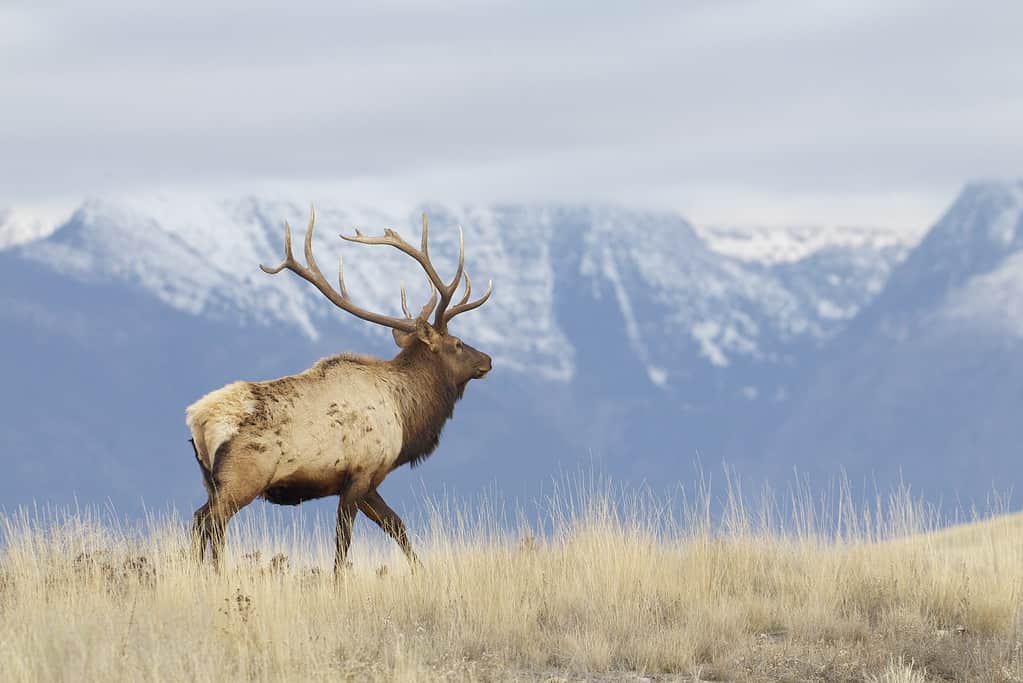
Elk can be found on Humphreys Peak in Arizona.
©Tom Reichner/Shutterstock.com
Elk (also known as wapiti) are large, majestic members of the deer family that inhabit North America and parts of Asia. Many Elk are also fond of Humphreys Peak in Arizona. They are the second largest species of deer, trailing only behind moose, and can stand up to six feet tall at the shoulder and weigh over 700 pounds.
Elk are known for their impressive antlers, which can grow up to four feet long and weigh up to 40 pounds. Only males (called bulls) grow antlers, which they use as weapons during mating season as they compete for females (called cows).
Elk are herbivores, feeding on a variety of vegetation such as grasses, leaves, and bark. They are also known to forage for food by digging in the ground for roots and bulbs.
In the United States, elk are primarily found in mountainous regions of the West, including the Rocky Mountains and the Pacific Northwest. They are also commonly hunted for their meat and antlers, which are highly prized. However, conservation efforts have helped to protect the elk population and ensure their long-term survival.
Mountain Lions
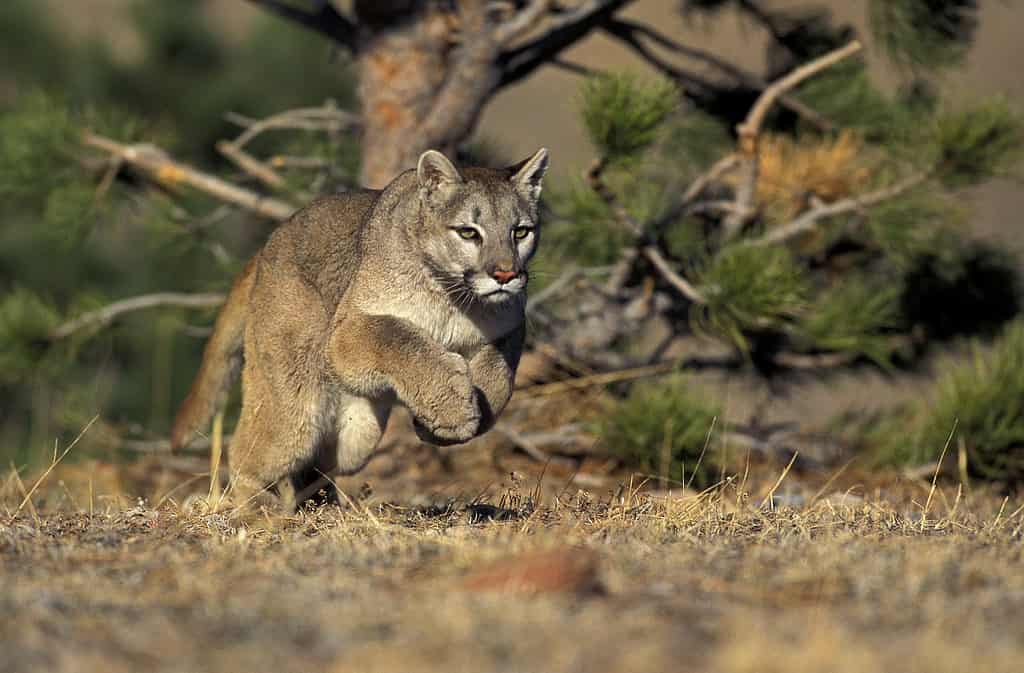
Mountain lions
can be seen on Humphreys Peak in Arizona.
©iStock.com/slowmotiongli
Mountain lions, also known as cougars or pumas, are large cats that are native to North and South America. They can occasionally be spotted lurking atop Humphreys Peak in Arizona. Mountain Lions stand about 2 to 3 feet tall at the shoulder and can weigh up to 220 pounds. They have a tan or light brown coat and a long tail.
Mountain lions are solitary animals and are known for their stealth and hunting abilities. They typically prey on deer but will also eat smaller mammals such as rabbits and rodents. Mountain lions are also known to occasionally attack livestock and pets.
Despite their reputation as fierce predators, mountain lions are generally shy and will try to avoid humans. However, they can be a danger to humans if they feel threatened or if their habitat encroaches on human settlements.
Conservation efforts have helped to increase the population of mountain lions in some areas, but habitat loss and human development continue to be major threats to their survival.
Black Bears
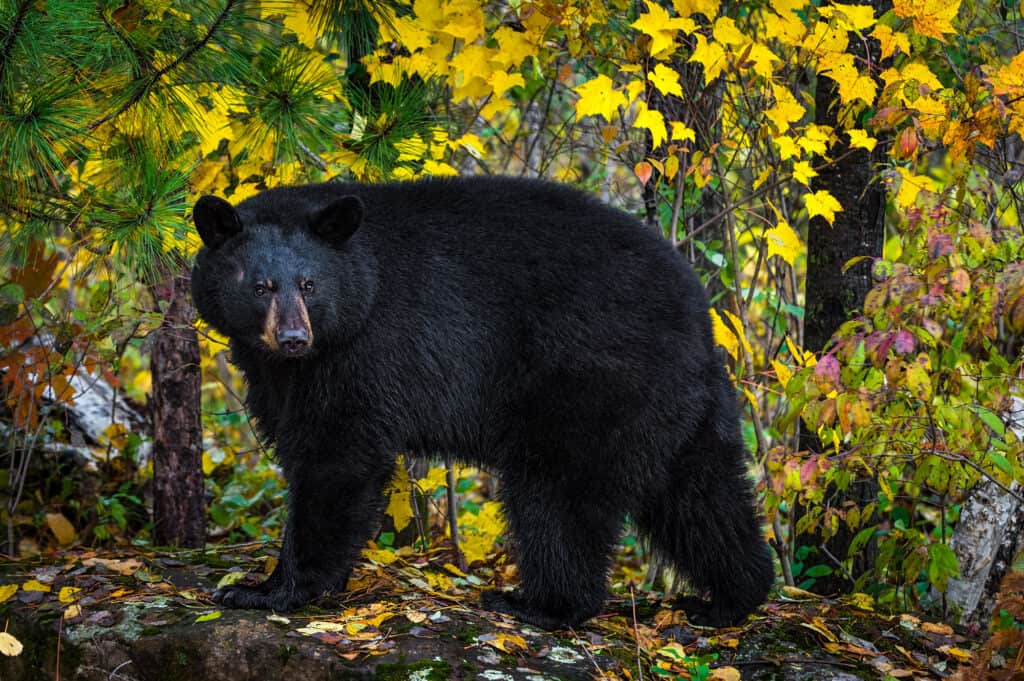
Black bears are omnivorous, meaning they can feed on a wide range of plant and animal matter.
©Holly Kuchera/Shutterstock.com
Black bears are a species of bear found in North America, including Arizona. They are generally smaller than brown bears, with males weighing around 150-300 pounds and females weighing around 90-175 pounds. Their coats are usually black but can also be brown or cinnamon-colored. They have small eyes, rounded ears, and a distinctive snout.
Black bears are omnivorous, their diet consists of both plant and animal matter. They will eat berries, nuts, roots, and honey in addition to insects, small mammals, and fish. Black bears are known for their climbing ability and can easily scale trees to avoid danger or reach food. They are also excellent swimmers.
Despite their name, not all black bears are actually black – some may be brown, blonde, or cinnamon-colored. They are generally shy and avoid humans but can become aggressive if they feel threatened or if they become habituated to humans.
Conservation efforts have helped increase black bear populations, which were once threatened due to habitat loss and hunting. Today, black bears are considered a species of least concern on the IUCN Red List.
Coyotes
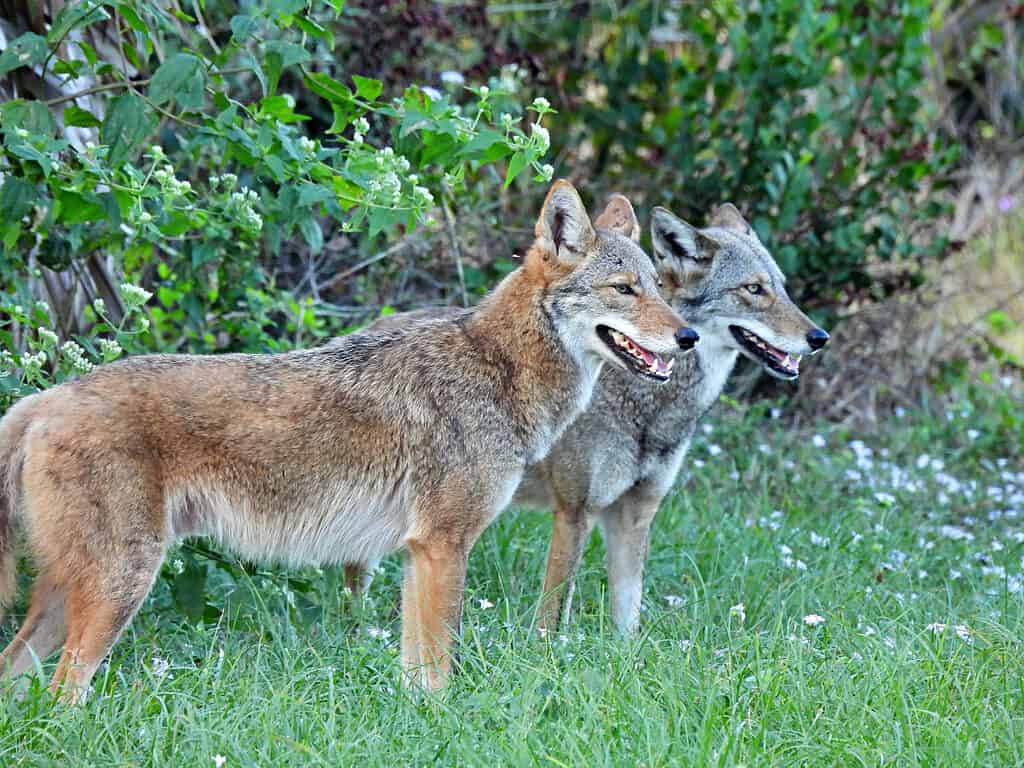
Coyotes can be seen roaming around on Humphreys Peak in Arizona.
©iStock.com/passion4nature
Coyotes are a common sight in Arizona and can be found in almost every habitat of the state, from deserts to forests, even atop Humphreys Peak. They are known for their distinctive yipping and howling calls, especially at night, and they are considered an important predator in the ecosystem.
Coyotes are opportunistic hunters and scavengers, feeding on a wide range of prey, including small mammals, birds, reptiles, and insects. They can also be a common predator of domestic livestock and pets. While they generally avoid interactions with humans, they can become habituated to urban areas and lose their natural fear of people, which can lead to conflicts.
It is essential to keep your distance and not feed wildlife, including coyotes, in order to maintain healthy and safe ecosystems for both humans and animals.
Red-Tailed Hawks
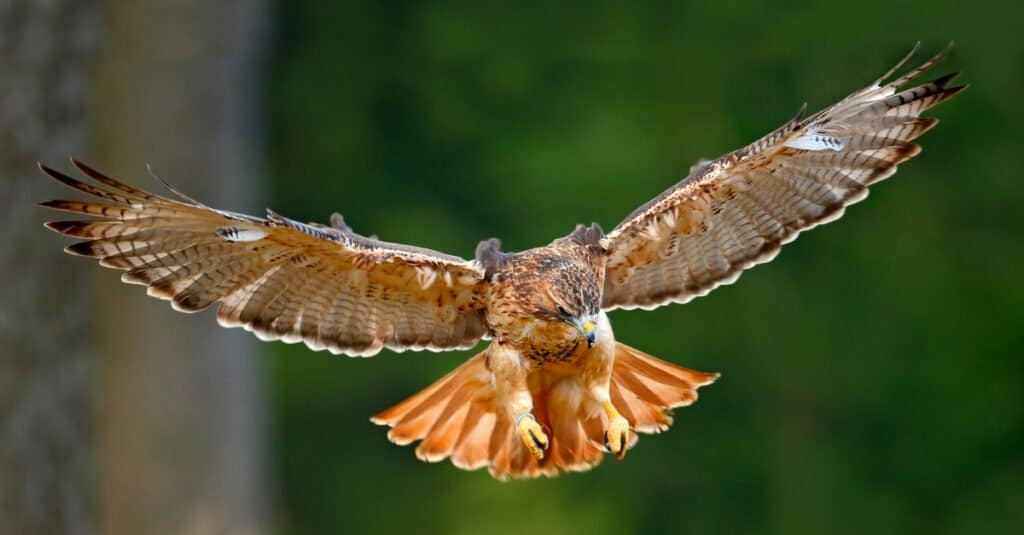
The red-tailed hawk’s distinct tail feathers are a result of the molting process.
©Ondrej Prosicky/Shutterstock.com
One of the most frequent raptors in Arizona is the red-tailed hawk, which is frequently seen above Humphreys Peak. They get their name from the distinctive red tail feathers that are a trademark of theirs. They are enormous, strong birds that live in a range of environments, from mountain forests to deserts.
These hawks are year-round residents in Arizona, and they can be seen soaring high in the sky, looking for prey. They feed mainly on rodents, rabbits, snakes, and birds. They are also known for their distinctive hunting technique, where they will perch on a high spot and swoop down on their prey from above.
Red-tailed Hawks in Arizona mate for life, and they can be spotted flying together during the breeding season. They build their nests in tall trees, and both parents take turns incubating the eggs and feeding the hatchlings.
Red-tailed Hawks are an important part of the ecosystem in Arizona. They help to control the population of rodents and other small animals, and they are also an important indicator of the health of the environment. As such, they are protected under state and federal laws.
Golden Eagles

Golden Eagles love mountainous regions including Humphreys Peak in Arizona.
©Martin Mecnarowski/Shutterstock.com
Golden eagles are a common sight in Arizona, particularly in the mountainous regions of the state including Humphreys Peak. They are one of the largest birds of prey in North America, with a wingspan of up to seven feet. Golden eagles are known for their powerful, sharp talons and beak, which they use to hunt a variety of prey including rabbits, ground squirrels, and other small mammals.
Golden eagles typically nest in remote, rocky areas of Arizona, often on cliff faces or other high ledges. They are also known to nest in trees or even in man-made structures such as tall buildings or power lines. Golden eagles mate for life, and both males and females are involved in caring for their young.
One of the main threats to golden eagles in Arizona is habitat loss, particularly due to development and urbanization. They may also be affected by poisoning from lead ammunition, which can be ingested when they feed on animals that have been shot.
Despite these threats, golden eagles remain a vital part of Arizona’s natural ecosystem, and efforts are being made to protect their habitats and minimize the impact of human activities on their populations.
In Conclusion
Overall, Humphreys Peak is a beautiful and popular destination that offers a unique and challenging hiking experience, breathtaking views, opportunities for outdoor recreation and adventure for visitors of all ages, and some pretty awesome animals too!
The photo featured at the top of this post is © iStock.com/digidreamgrafix
Thank you for reading! Have some feedback for us? Contact the AZ Animals editorial team.






